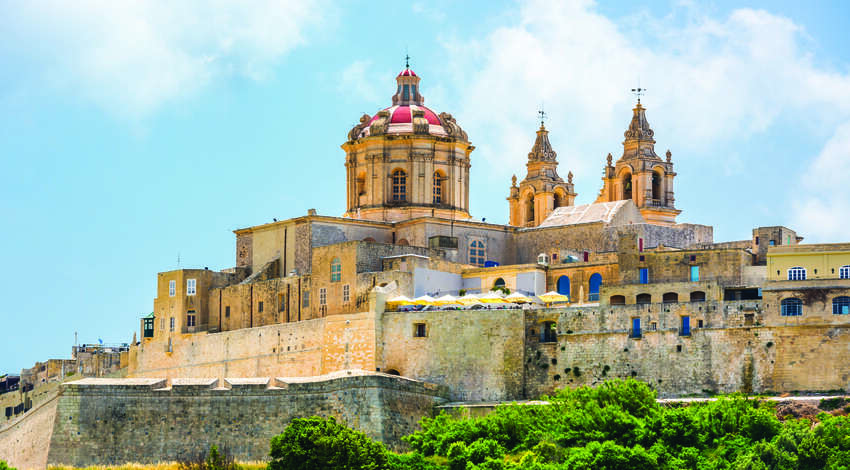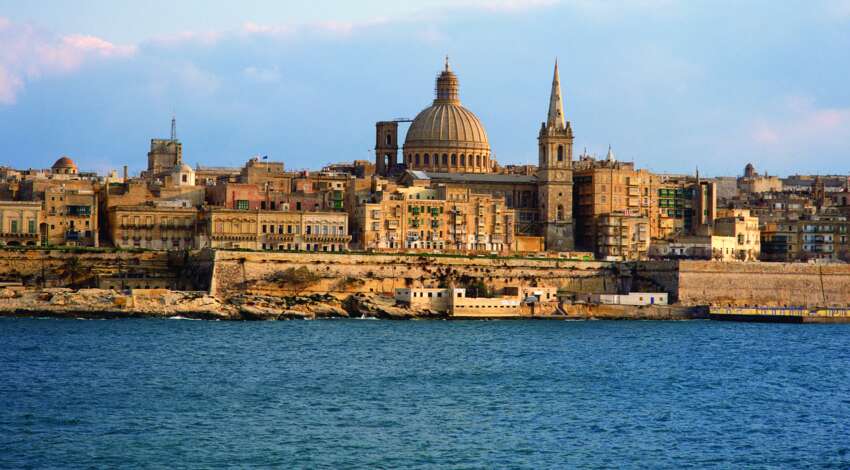Malta: There’s History at Every Turn
The Mediterranean is one of the world’s most popular travel destinations, yet many people haven’t discovered the jewel that is Malta. If you love history, a learning adventure on this fascinating island may be just the right fit for you.
Malta has been at the crossroads of history for thousands of years. Strategically situated in the Mediterranean Sea between Italy and North Africa, the island attracted the attention of empires dating back to the Phoenicians, and later the Persians, Carthaginians, Greeks, Arabs, Romans and Normans, all of whom conquered and controlled Malta. In the modern era, most of the major players in the region also took turns claiming the island, including Spain, France and Britain, before Malta finally achieved independence in 1964.

Mdina, Malta
While all of this upheaval undoubtedly made the Maltese uncertain, at times, exactly who was in charge (“If it’s Tuesday, it must be… the Phoenicians?”), it also contributed to a culture that even today reflects the influence of the dazzling array of visitors, welcome and otherwise, throughout Malta’s history.
The language(s) of Malta
The country has two official languages, Maltese and English, and many islanders also speak Italian, making them one of the most multilingual populations in Europe. The Maltese language itself is a variation of the Arabic spoken on Sicily beginning in the 9th century and has the distinction of being the only Semitic language among the official ones of the European Union. It has elements of medieval Latin and English, reflecting periods during which those languages prevailed.
Malta’s cuisine is similarly diverse. It draws heavily on Italian and Sicilian influences for dishes like the beloved bragioli (beef olives; if you’re guessing it’s made with olives … you’re wrong), but also on Middle Eastern spices and flavor combinations. The popular English breakfast and traditional Sunday roasts come courtesy of the more recent British presence.

Cittadella, Malta
A Long History of Faith
A Ninety-eight percent of the islanders are Catholic, again reflecting influential cultures of the last thousand-plus years — in particular the Normans, French, Spanish and Italians. In fact, the Order of Knights of the Hospital of St. John of Jerusalem, a Catholic military order also known as the Knights Hospitaller, ruled Malta for 268 years, from 1530 to 1798. But Catholicism on Malta far predates even those influences: According to the Acts of the Apostles, the church in Malta was founded in 60 A.D. by St. Paul, following his shipwreck on the island. Today, it is claimed that there are 365 churches on the island, one for every day of the year.
Truly Stunning Archaeological Sites
Malta was an ancient country even before the great powers of antiquity began warring over it. The island has been inhabited since 5900 B.C. And while visitors to Malta today will find a cosmopolitan society with a decidedly forward-looking outlook (Malta is at the forefront in creating “smart cities,” using technology to promote urban efficiency, sustainability and quality of life), a look beneath the surface — literally — reveals something very different.
Just three miles outside the capital city of Valletta lies the Hal Saflieni Hypogeum, a meandering subterranean complex for burial and worship that dates back nearly 6,000 years. It fell out of use around 2,500 B.C. and lay hidden for millenia until 1902, when one chamber of the complex was accidentally uncovered during a housing construction project.

Valletta, Malta
The Hypogeum is again open to visitors after recent preservation efforts. Like other Neolithic sites, its environment is vulnerable to changes in temperature and humidity, as well as human interactions, so the site is kept under careful controls.
The Hypogeum is not Malta’s only ancient wonder. Aboveground, across the island, are several megalithic temples that date between 3600 BC and 2500 BC. Until the recent discovery of Gobekli Tepe in Turkey, these were considered to be the oldest freestanding structures on the planet.
Come to Malta with us
Road Scholar offers several learning adventures through which you can explore these remarkable structures (all of them UNESCO World Heritage sites), discover more about the island’s long history, and experience modern-day Maltese culture. One popular program is Winter in Malta: Thousands of Years of History & Culture. Winters are wonderfully mild on the island, with temperatures typically in the 50 and 60s. We currently offer two other Malta experiences, as well.
Malta is endlessly fascinating. You’d be hard-pressed to find a better destination for learning and discovery!
